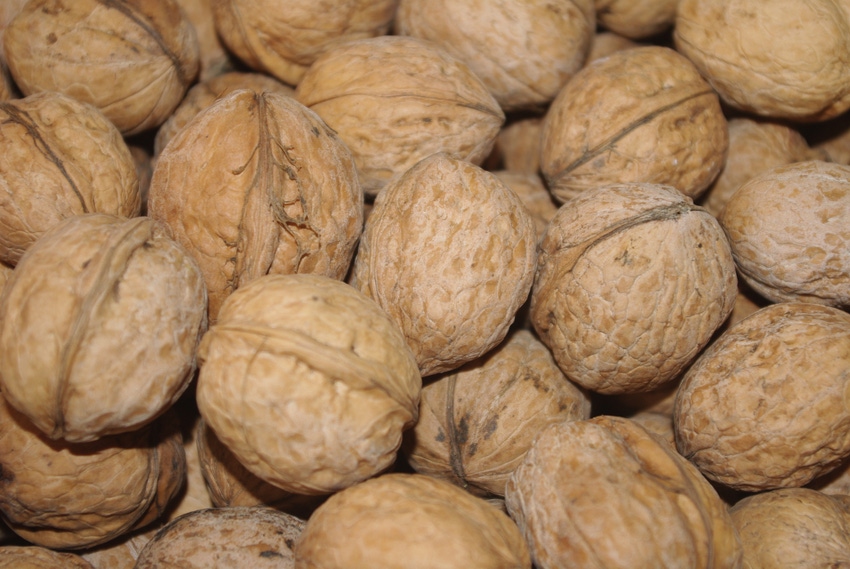November 3, 2016

California walnut grower Don Norene faces higher production costs in the future, following the recent passage of legislation establishing a higher minimum wage, new overtime pay requirements for California farm workers, and walnut grower prices at half the amount compared to 2014.
Yet Norene remains in good spirits. His 2016 harvest shifted from earlier season varieties to his Chandler trees during the second week of October.
“We’re walking in ‘high cotton,’” says Norene of Norene Ranches, Inc. He grows 750 acres of walnuts near Rio Oso, Calif. “We’re harvesting more tons from each variety than last year and the quality is better. We’re definitely going to have another record crop.”
This veteran Sutter County grower, a long-time member and current chairman of the Walnut Bargaining Association, doubts California’s walnut production this year will meet the National Agricultural Statistical Service estimate of 670,000 tons.
The predicted tonnage is 11 percent higher than the record 603,000 tons (in-shell) which California growers produced in 2015.
“This would be a huge jump in just one year,” he says. “I think the increase is more likely in the 5 to 7.5 percent range.”
In addition to his higher walnut yields this year, Norene is particularly pleased with the color and size of his Hartley walnuts.
“Last year, the size and quality of the early-season nuts - Ashley, Chico, and Vina - was superb,” he says. “But once we moved into the Hartleys the size and color dropped off. It was like - what happened?”
Other quality indicators of his crop this year are also good – the low incidence of mold, minimal Navel orangeworm damage, and relatively limited shrivel, says Norene.
His harvest this year began Sept. 7 shaking the first of his Ashley crop - four days earlier than last year’s unusually early start. He expected to finish with the Chandlers by the end of October.
Quality control is a key part of Norene’s orchard management practices. He believes it’s worth the added costs.
“The difference between the higher prices paid for premium quality walnuts and those of lower quality more than offset the expense of delivering good walnuts to the handler,” Norene says.
His quality control program includes timely spray applications, as needed, to protect the trees and the crop from blight and other diseases, and from attack by insect pests including aphids, codling moth, Navel orangeworm, and the walnut husk fly.
Ethephon treatment is another critical component for Norene. He applies the plant growth regulator on his early-season varieties - at or shortly after the walnuts reach maturity - to hasten hull cracking and separation from the shell.
This allows him to harvest the crop four to seven days sooner, depending on the season and the variety. As a result, the kernels tend to be lighter in color. The treatment also reduces the risk of insect damage.
Norene’s 2016 harvest has benefitted from cooperative weather. Warm, dry conditions enabled crews and machinery to move smoothly through the early-to-mid-season varieties. Then, as if on schedule, some light rains were followed by morning dews and cooler temperatures in early October which helped speed up hull split and aid the removal of the Hartleys and Chandlers.
“I think we stayed on top of our crop protection program pretty well this year,” Norene says.
“We even sprayed some insecticides on trees by air. Some of these trees are 60 feet high and too tall to treat effectively with a ground spray rig.”
You May Also Like




